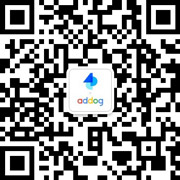
本案例默认翻译为中文,点击可切换回原语言
已切换成原语言,点击可翻译成中文
第六区旅行箱
案例简介:概要 第六区博物馆记得,当开普敦的第六区被宣布为 “仅限白人” 1966年时,种族隔离政权强行驱逐的6万名有色人种。这是一个小型的,由独立资助的社区博物馆,几乎没有政府资助,因此严重依赖付费游客。开普敦是当地和国际旅游圣地,我们的简介是指导尽可能多的游客将第六区博物馆纳入其行程。但是,我们必须在很小的预算限制下工作,排除电视和广播等超出范围的选择。我们需要找到一种利用博物馆资产的方法-展览物品,活着的被驱逐者志愿者和一个非常引人注目的故事-来吸引尽可能多的观众。 执行 我们创建了三个不同的历史手提箱,并在其中装满了代表人民和第六区1966年时间的物品。每个手提箱都讲述了60,000个被强迫驱逐者之一的真实生活故事,以及家庭照片,驱逐通知和种族隔离时代的身份证件,例如 “CAPE COLOURED”。一旦游客在行李收集区看到了我们的第六区行李箱,我们就在机场主要大厅里建立了一个激活摊位,第六区博物馆品牌的拉起横幅和小册子讲述了更多关于博物馆的信息。这个摊位由志愿者和实际被驱逐者自己穿着品牌t恤,与感兴趣的游客进行一对一的对话,分享他们在第六区的第一人称故事。在开普敦国际爵士音乐节之前,我们整整一天都在机场,这是开普敦市举办的最大年度活动。 战略 开普敦国际机场每年有130万国际和690万的国内游客,这使其成为吸引尽可能多的观众的理想场所。坐飞机的人也往往受过高等教育和收入,因此,对第六区博物馆的历史感兴趣,并可能花钱去参观它。通过将我们的行李箱放在行李传送带上,当这些游客等待收集自己的行李箱时,我们也有了几乎 “俘虏的观众”。一会儿,他们发现自己处于被迫撤离的受害者的位置。我们还将特别设计的行李牌绑在新来的游客的行李箱上。每个标签都问了一个问题: “如果种族隔离迫使你打包,你会拿什么?”,讲述了第六区被迫搬家的受害者的个人故事,并向游客提供了第六区博物馆的50% 入场费折扣。 结果 一天之内,我们到达了开普敦的22,000名游客。相对于博物馆的月平均4000游客人数,这意味着同比认知度525% 提高。我们与一对一交谈的人的类型包括: * 第一次来自海外的游客 * 定期来自海外的游客 * 从未听说过六区的南非人 * 在该国其他地区经历过被迫撤离的南非人 * 来机场接家人的开普敦人 * 开普敦人收集商务旅客和旅行团。spectrum接受了我们的50% 优惠,并承诺参观博物馆。此外,一位历史老师和几位当地活动组织者要求博物馆进一步联系。 活动描述 在收到种族隔离政府的驱逐通知后,被强行驱逐的60,000人几乎没有时间收拾财产。大多数人只剩下一个手提箱。因此,我们重新制作了这些手提箱,就好像它们每个都由一个被遣返者1966年打包一样。然后,我们把这些历史行李箱带到一个地方,800万奇怪的年度游客到城市必须通过-开普敦国际机场。我们将它们放在国际和国内抵达的行李传送带上。我们还将特别设计的行李牌绑在新来的游客的行李箱上。每个标签都讲述了第六区被迫撤离的受害者的个人故事,并为游客提供了第六区博物馆的50% 入场费折扣。我们还将一些被驱逐者带到机场分享他们的故事。 相关性 这件作品将机场行李传送带和手提箱变成了媒体。具体来说,开普敦国际机场的旋转木马。我们的客户是一个独立的博物馆 -- 第六区博物馆。它记得6万名有色人种被种族隔离政府强行驱逐,当时开普敦的第六区被宣布为 “仅限白人” 1966年。这些被驱逐者在收到驱逐通知后几乎没有时间收拾行李,许多人带着一个手提箱离开了。因此,为了将许多到达开普敦机场的游客带到博物馆,我们重新制作了这些被驱逐的手提箱,并将它们放在机场的行李传送带上。
第六区旅行箱
案例简介:Synopsis The District Six Museum remembers the 60 000 people of colour forcibly evicted by the apartheid regime when Cape Town’s District Six was declared a “Whites Only” area in 1966.It is a small, independently-funded community Museum that receives little government funding and so relies heavily on paying visitors. Cape Town is a local and international tourist mecca, and our brief was to direct as many of those tourists as possible to include the District Six Museum on their itinerary. However, we had to work within the constraints of a very small budget, ruling out above the line options like TV and radio. We needed find a way of using the Museum’s assets – exhibition items, living evictee volunteers and a very compelling story – to reach the biggest possible audience. Execution We created three different historical suitcases and filled them with objects representative of the people and the time of District Six in 1966. Each suitcase told the real-life story of one of the 60,000 forced evictees, together with family photographs, eviction notices and apartheid-era identity documents with racial classifications like “CAPE COLOURED”. Once visitors had seen our District Six suitcases in the baggage collection area, we followed up with an activation stand with in the main airport lobby, with District Six Museum-branded pull up banners and and brochures telling more about the Museum.This stand was manned by volunteers and actual evictees themselves in branded t-shirts, to share their first person stories of District Six in in one-on-one conversations with interested visitors. We were at the airport for the full day before the Cape Town International Jazz Festival, the biggest annual event hosted by the City of Cape Town. Strategy Cape Town International Airport has 1.3 million international and 6.9 million domestic visitors a year, which made it the ideal place to reach the maximum possible audience.People who fly also tend to be of a higher education and income, therefore interested in the history of the District Six Museum and likely to spend money to visit it.By placing our suitcases on the baggage carousels, we also had a virtually “captive audience” as these visitors waited to collect their own suitcases.For a moment, they found themselves in the position of a victim of forced removals. We also tied specially-designed luggage tags onto newly arrived visitors’ suitcases. Each tag asked the question: “IF APARTHEID FORCED YOU TO PACK, WHAT WOULD YOU HAVE TAKEN?”, told the individual story of a victim of forced removals in District Six and offered visitors a 50% entrance fee discount to the District Six Museum. Outcome In one day, we reached 22,000 visitors to Cape Town. In relation to the Museum’s monthly average visitor number of 4000, this represents a 525% increase in year-on-year awareness. The types of people we spoke to one-on-one included:*first time visitors from overseas*regular visitors from overseas*South Africans who had never heard of District Six*South Africans who themselves had experienced forced removals in other parts of the country*Capetonians who came to the airport to collect family members*Capetonians collecting business travellers and tour groups.All people across this spectrum accepted our 50% off offer and committed to visit the Museum.In addition, we had requests for further contact from the Museum from a history teacher and several local event organizers. Campaign Description The 60,000 people forcibly evicted barely had time to pack their possessions after receiving their eviction notices from the apartheid government. Most left with little more than a single suitcase. So we recreated these suitcases, as if they had each been packed by a single evictee, back in 1966. Then we took these historical suitcases to one place that the 8 million odd annual visitors to the city have to pass through – Cape Town International Airport. We placed them on the baggage carousels in both International and Domestic Arrivals. We also tied specially-designed luggage tags onto newly arrived visitors’ suitcases. Each tag told the individual story of a victim of forced removals in District Six and gave visitors a 50% entrance fee discount to the District Six Museum.We also brought some of the evictees themselves to the airport to share their stories. Relevancy This piece turns airport baggage carousels and suitcases into media. Specifically, the carousels at Cape Town International Airport. Our client is an independent museum - the District Six Museum. It remembers 60 000 people of colour forcibly evicted by the apartheid government, when Cape Town’s District Six was declared “whites only” in 1966.These evictees barely had to time to pack after receiving their eviction notices, and many left with a single suitcase. So, to drive the many tourists arriving at Cape Town Airport to the Museum, we re-created these evictee suitcases and placed them on the airport’s baggage carousels.
District Six Travelling Suitcases
案例简介:概要 第六区博物馆记得,当开普敦的第六区被宣布为 “仅限白人” 1966年时,种族隔离政权强行驱逐的6万名有色人种。这是一个小型的,由独立资助的社区博物馆,几乎没有政府资助,因此严重依赖付费游客。开普敦是当地和国际旅游圣地,我们的简介是指导尽可能多的游客将第六区博物馆纳入其行程。但是,我们必须在很小的预算限制下工作,排除电视和广播等超出范围的选择。我们需要找到一种利用博物馆资产的方法-展览物品,活着的被驱逐者志愿者和一个非常引人注目的故事-来吸引尽可能多的观众。 执行 我们创建了三个不同的历史手提箱,并在其中装满了代表人民和第六区1966年时间的物品。每个手提箱都讲述了60,000个被强迫驱逐者之一的真实生活故事,以及家庭照片,驱逐通知和种族隔离时代的身份证件,例如 “CAPE COLOURED”。一旦游客在行李收集区看到了我们的第六区行李箱,我们就在机场主要大厅里建立了一个激活摊位,第六区博物馆品牌的拉起横幅和小册子讲述了更多关于博物馆的信息。这个摊位由志愿者和实际被驱逐者自己穿着品牌t恤,与感兴趣的游客进行一对一的对话,分享他们在第六区的第一人称故事。在开普敦国际爵士音乐节之前,我们整整一天都在机场,这是开普敦市举办的最大年度活动。 战略 开普敦国际机场每年有130万国际和690万的国内游客,这使其成为吸引尽可能多的观众的理想场所。坐飞机的人也往往受过高等教育和收入,因此,对第六区博物馆的历史感兴趣,并可能花钱去参观它。通过将我们的行李箱放在行李传送带上,当这些游客等待收集自己的行李箱时,我们也有了几乎 “俘虏的观众”。一会儿,他们发现自己处于被迫撤离的受害者的位置。我们还将特别设计的行李牌绑在新来的游客的行李箱上。每个标签都问了一个问题: “如果种族隔离迫使你打包,你会拿什么?”,讲述了第六区被迫搬家的受害者的个人故事,并向游客提供了第六区博物馆的50% 入场费折扣。 结果 一天之内,我们到达了开普敦的22,000名游客。相对于博物馆的月平均4000游客人数,这意味着同比认知度525% 提高。我们与一对一交谈的人的类型包括: * 第一次来自海外的游客 * 定期来自海外的游客 * 从未听说过六区的南非人 * 在该国其他地区经历过被迫撤离的南非人 * 来机场接家人的开普敦人 * 开普敦人收集商务旅客和旅行团。spectrum接受了我们的50% 优惠,并承诺参观博物馆。此外,一位历史老师和几位当地活动组织者要求博物馆进一步联系。 活动描述 在收到种族隔离政府的驱逐通知后,被强行驱逐的60,000人几乎没有时间收拾财产。大多数人只剩下一个手提箱。因此,我们重新制作了这些手提箱,就好像它们每个都由一个被遣返者1966年打包一样。然后,我们把这些历史行李箱带到一个地方,800万奇怪的年度游客到城市必须通过-开普敦国际机场。我们将它们放在国际和国内抵达的行李传送带上。我们还将特别设计的行李牌绑在新来的游客的行李箱上。每个标签都讲述了第六区被迫撤离的受害者的个人故事,并为游客提供了第六区博物馆的50% 入场费折扣。我们还将一些被驱逐者带到机场分享他们的故事。 相关性 这件作品将机场行李传送带和手提箱变成了媒体。具体来说,开普敦国际机场的旋转木马。我们的客户是一个独立的博物馆 -- 第六区博物馆。它记得6万名有色人种被种族隔离政府强行驱逐,当时开普敦的第六区被宣布为 “仅限白人” 1966年。这些被驱逐者在收到驱逐通知后几乎没有时间收拾行李,许多人带着一个手提箱离开了。因此,为了将许多到达开普敦机场的游客带到博物馆,我们重新制作了这些被驱逐的手提箱,并将它们放在机场的行李传送带上。
District Six Travelling Suitcases
案例简介:Synopsis The District Six Museum remembers the 60 000 people of colour forcibly evicted by the apartheid regime when Cape Town’s District Six was declared a “Whites Only” area in 1966.It is a small, independently-funded community Museum that receives little government funding and so relies heavily on paying visitors. Cape Town is a local and international tourist mecca, and our brief was to direct as many of those tourists as possible to include the District Six Museum on their itinerary. However, we had to work within the constraints of a very small budget, ruling out above the line options like TV and radio. We needed find a way of using the Museum’s assets – exhibition items, living evictee volunteers and a very compelling story – to reach the biggest possible audience. Execution We created three different historical suitcases and filled them with objects representative of the people and the time of District Six in 1966. Each suitcase told the real-life story of one of the 60,000 forced evictees, together with family photographs, eviction notices and apartheid-era identity documents with racial classifications like “CAPE COLOURED”. Once visitors had seen our District Six suitcases in the baggage collection area, we followed up with an activation stand with in the main airport lobby, with District Six Museum-branded pull up banners and and brochures telling more about the Museum.This stand was manned by volunteers and actual evictees themselves in branded t-shirts, to share their first person stories of District Six in in one-on-one conversations with interested visitors. We were at the airport for the full day before the Cape Town International Jazz Festival, the biggest annual event hosted by the City of Cape Town. Strategy Cape Town International Airport has 1.3 million international and 6.9 million domestic visitors a year, which made it the ideal place to reach the maximum possible audience.People who fly also tend to be of a higher education and income, therefore interested in the history of the District Six Museum and likely to spend money to visit it.By placing our suitcases on the baggage carousels, we also had a virtually “captive audience” as these visitors waited to collect their own suitcases.For a moment, they found themselves in the position of a victim of forced removals. We also tied specially-designed luggage tags onto newly arrived visitors’ suitcases. Each tag asked the question: “IF APARTHEID FORCED YOU TO PACK, WHAT WOULD YOU HAVE TAKEN?”, told the individual story of a victim of forced removals in District Six and offered visitors a 50% entrance fee discount to the District Six Museum. Outcome In one day, we reached 22,000 visitors to Cape Town. In relation to the Museum’s monthly average visitor number of 4000, this represents a 525% increase in year-on-year awareness. The types of people we spoke to one-on-one included:*first time visitors from overseas*regular visitors from overseas*South Africans who had never heard of District Six*South Africans who themselves had experienced forced removals in other parts of the country*Capetonians who came to the airport to collect family members*Capetonians collecting business travellers and tour groups.All people across this spectrum accepted our 50% off offer and committed to visit the Museum.In addition, we had requests for further contact from the Museum from a history teacher and several local event organizers. Campaign Description The 60,000 people forcibly evicted barely had time to pack their possessions after receiving their eviction notices from the apartheid government. Most left with little more than a single suitcase. So we recreated these suitcases, as if they had each been packed by a single evictee, back in 1966. Then we took these historical suitcases to one place that the 8 million odd annual visitors to the city have to pass through – Cape Town International Airport. We placed them on the baggage carousels in both International and Domestic Arrivals. We also tied specially-designed luggage tags onto newly arrived visitors’ suitcases. Each tag told the individual story of a victim of forced removals in District Six and gave visitors a 50% entrance fee discount to the District Six Museum.We also brought some of the evictees themselves to the airport to share their stories. Relevancy This piece turns airport baggage carousels and suitcases into media. Specifically, the carousels at Cape Town International Airport. Our client is an independent museum - the District Six Museum. It remembers 60 000 people of colour forcibly evicted by the apartheid government, when Cape Town’s District Six was declared “whites only” in 1966.These evictees barely had to time to pack after receiving their eviction notices, and many left with a single suitcase. So, to drive the many tourists arriving at Cape Town Airport to the Museum, we re-created these evictee suitcases and placed them on the airport’s baggage carousels.
第六区旅行箱
暂无简介
District Six Travelling Suitcases
暂无简介
基本信息
暂无评分
已有{{caseInfo.tatolPeople}}人评分
创作者
案例详情
涵盖全球100万精选案例,涉及2800个行业,包含63000个品牌
热门节日97个,23个维度智能搜索
-

项目比稿
品类案例按时间展现,借鉴同品牌策略,比稿提案轻松中标
-

创意策划
任意搜索品牌关键词,脑洞创意策划1秒呈现
-

竞品调研
一键搜索竞品往年广告,一眼掌握对手市场定位
-

行业研究
热词查看洞悉爆点,抢占行业趋势红利
登录后查看全部案例信息
如果您是本案的创作者或参与者 可对信息进行完善







